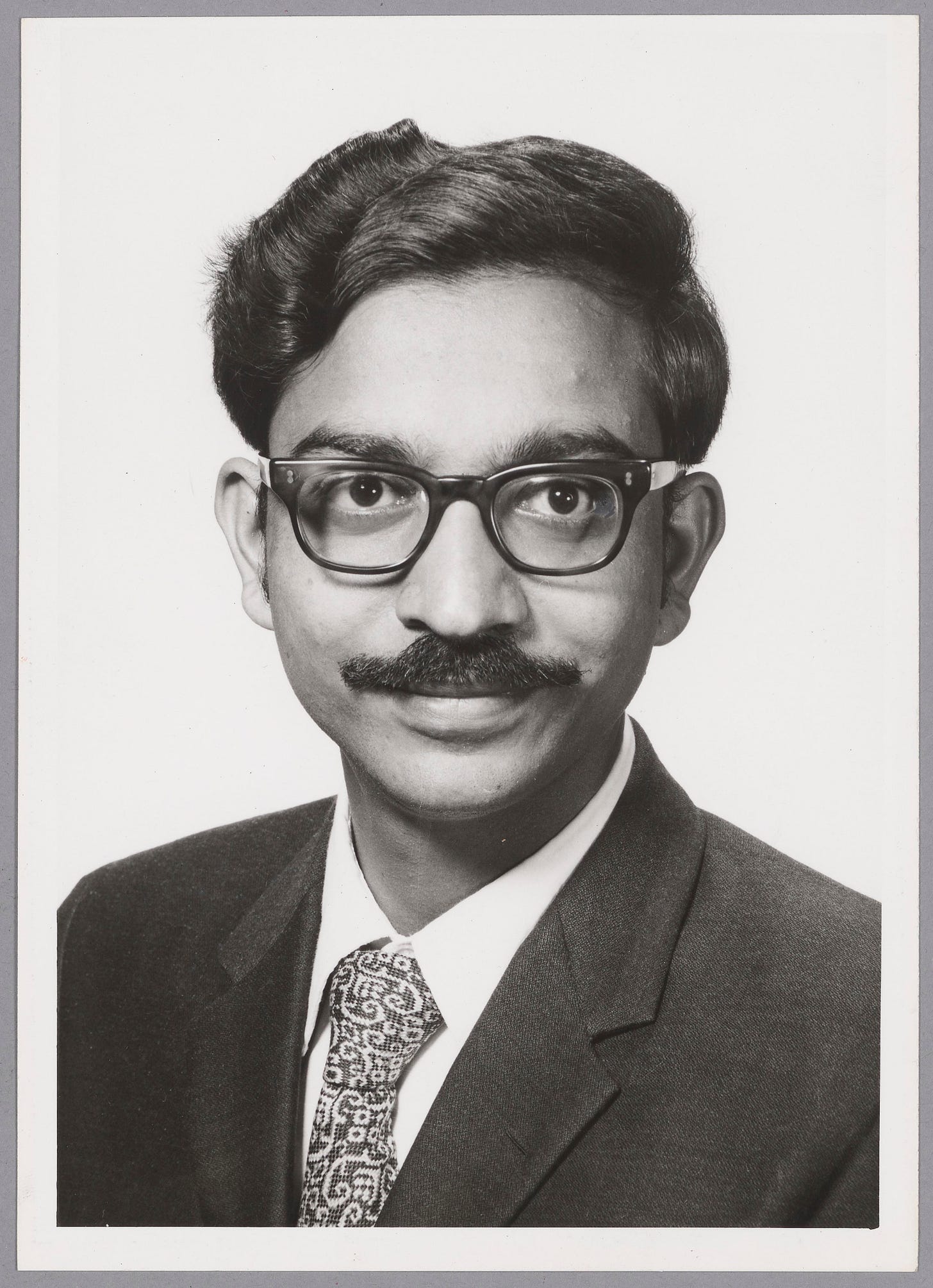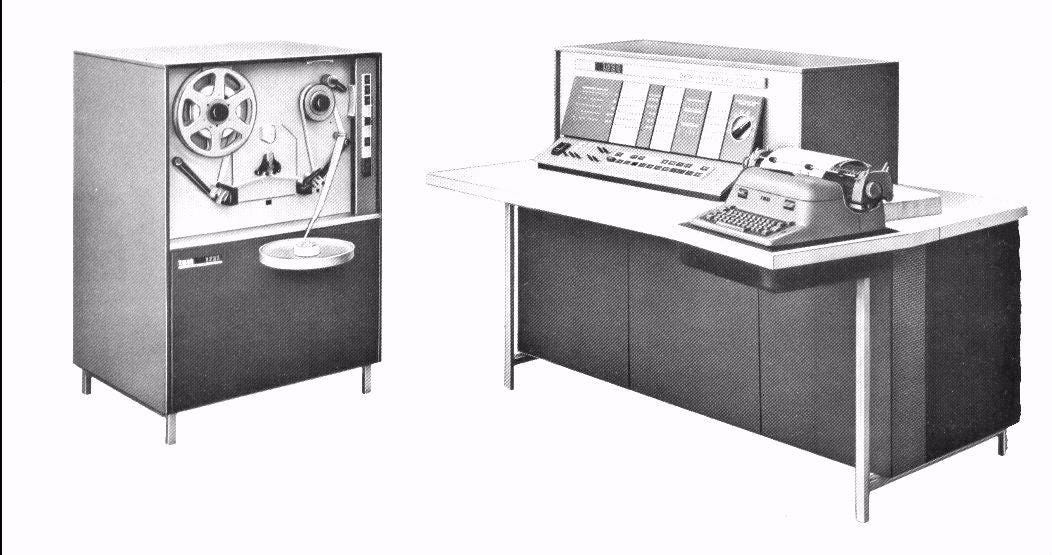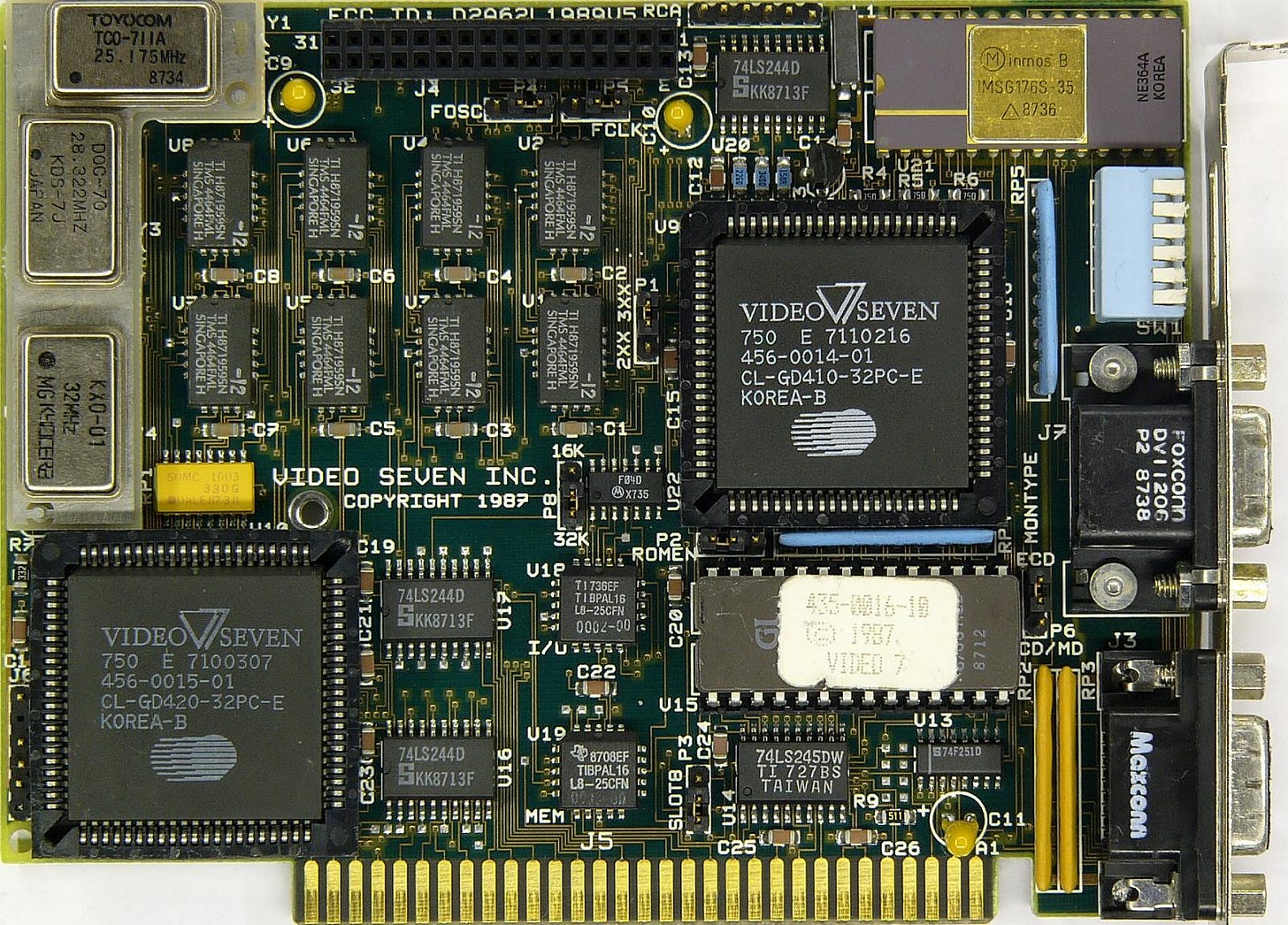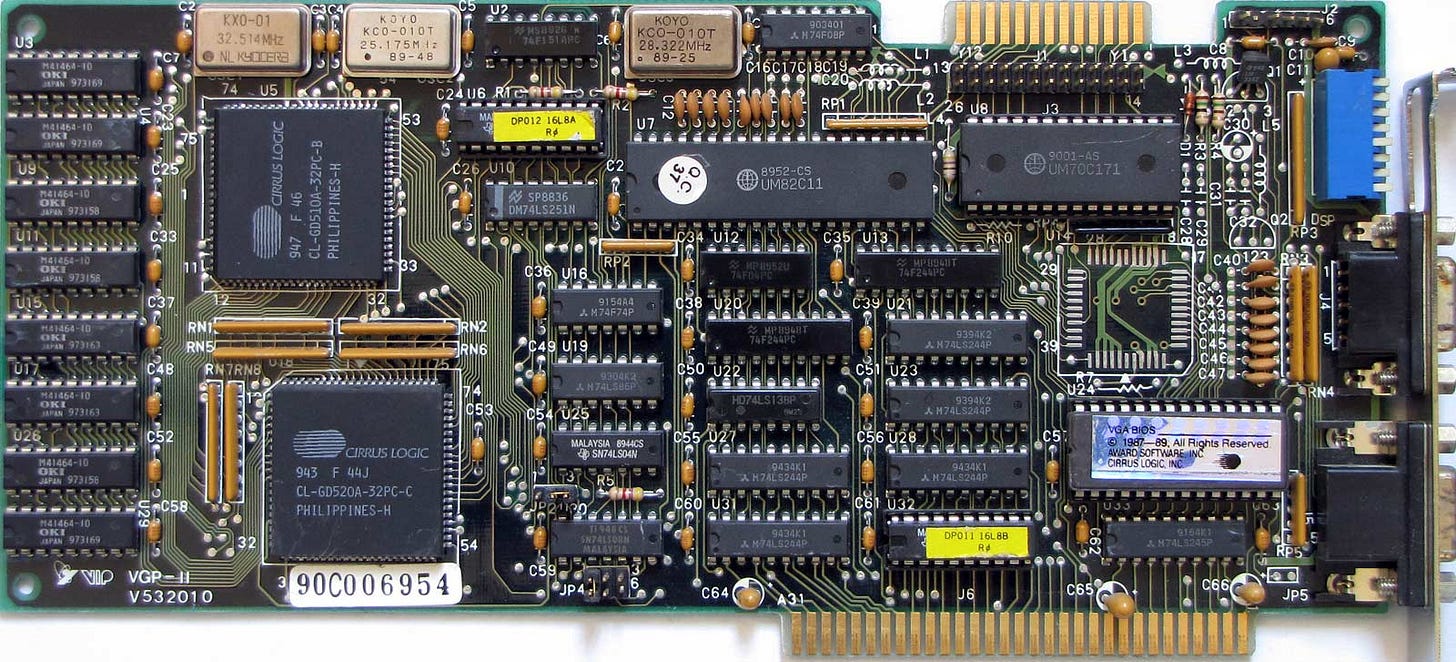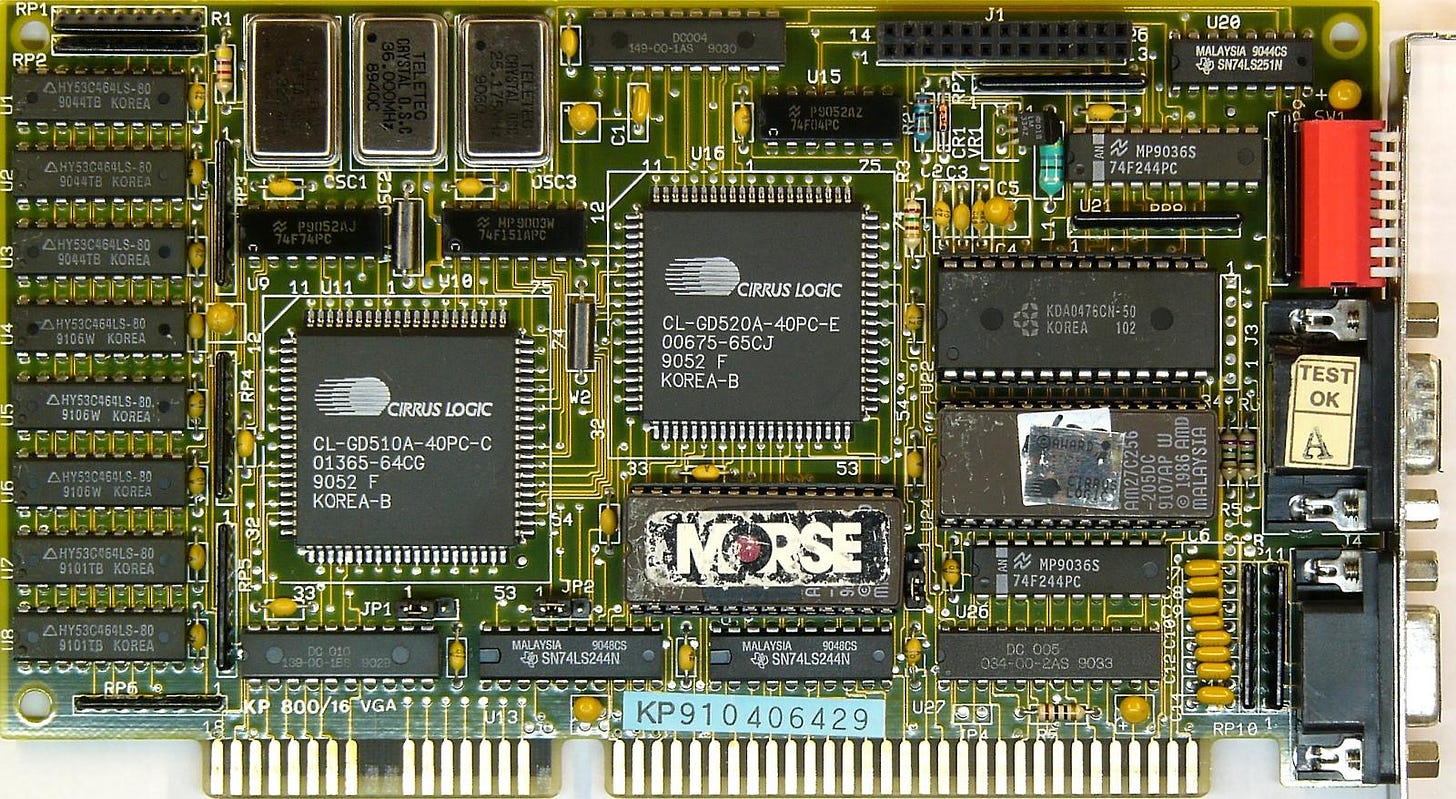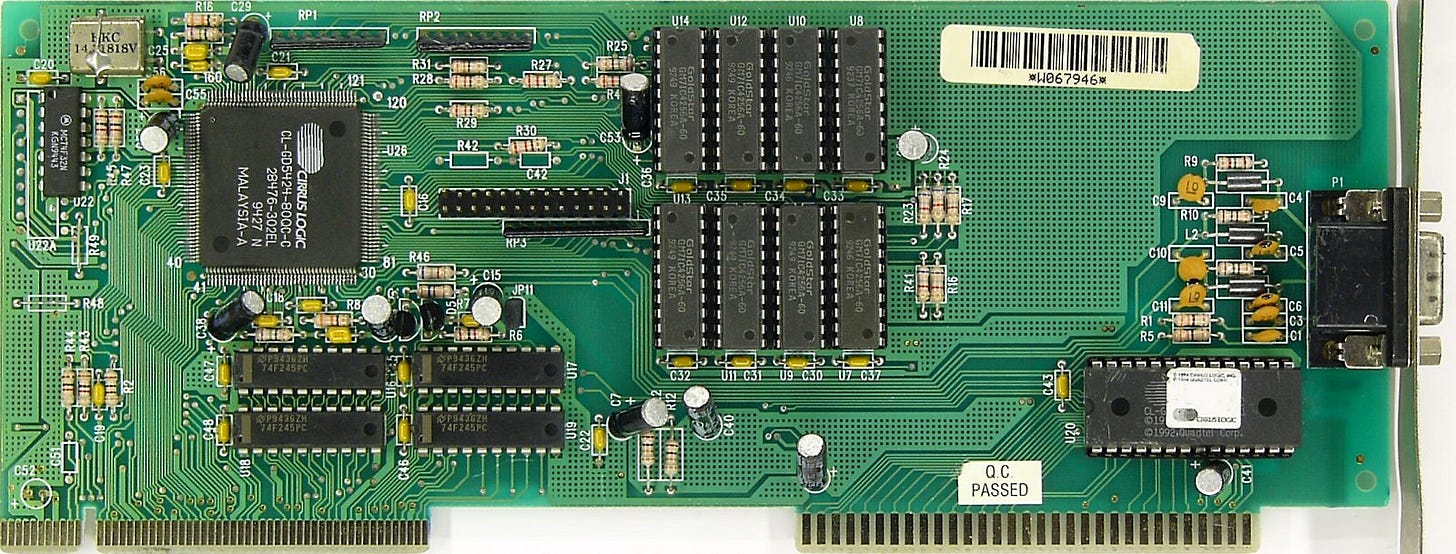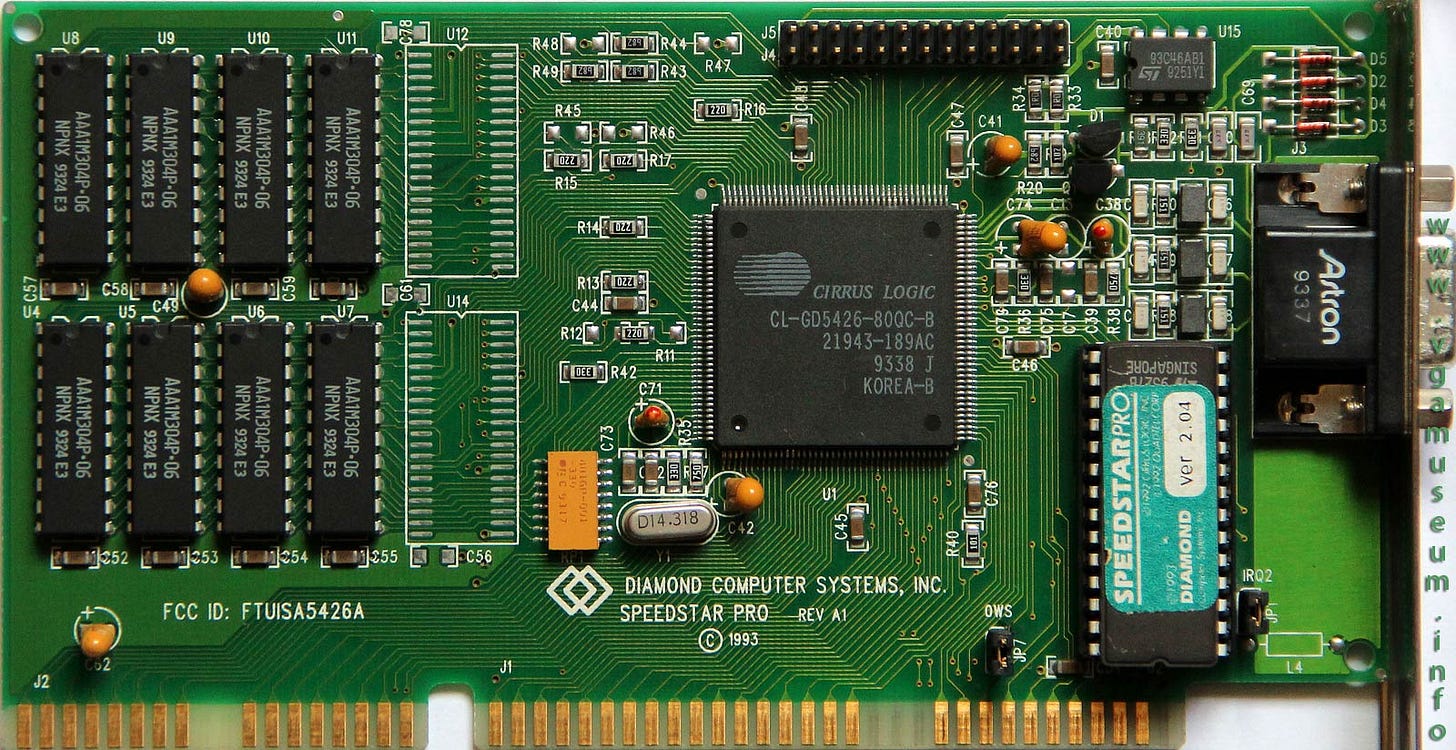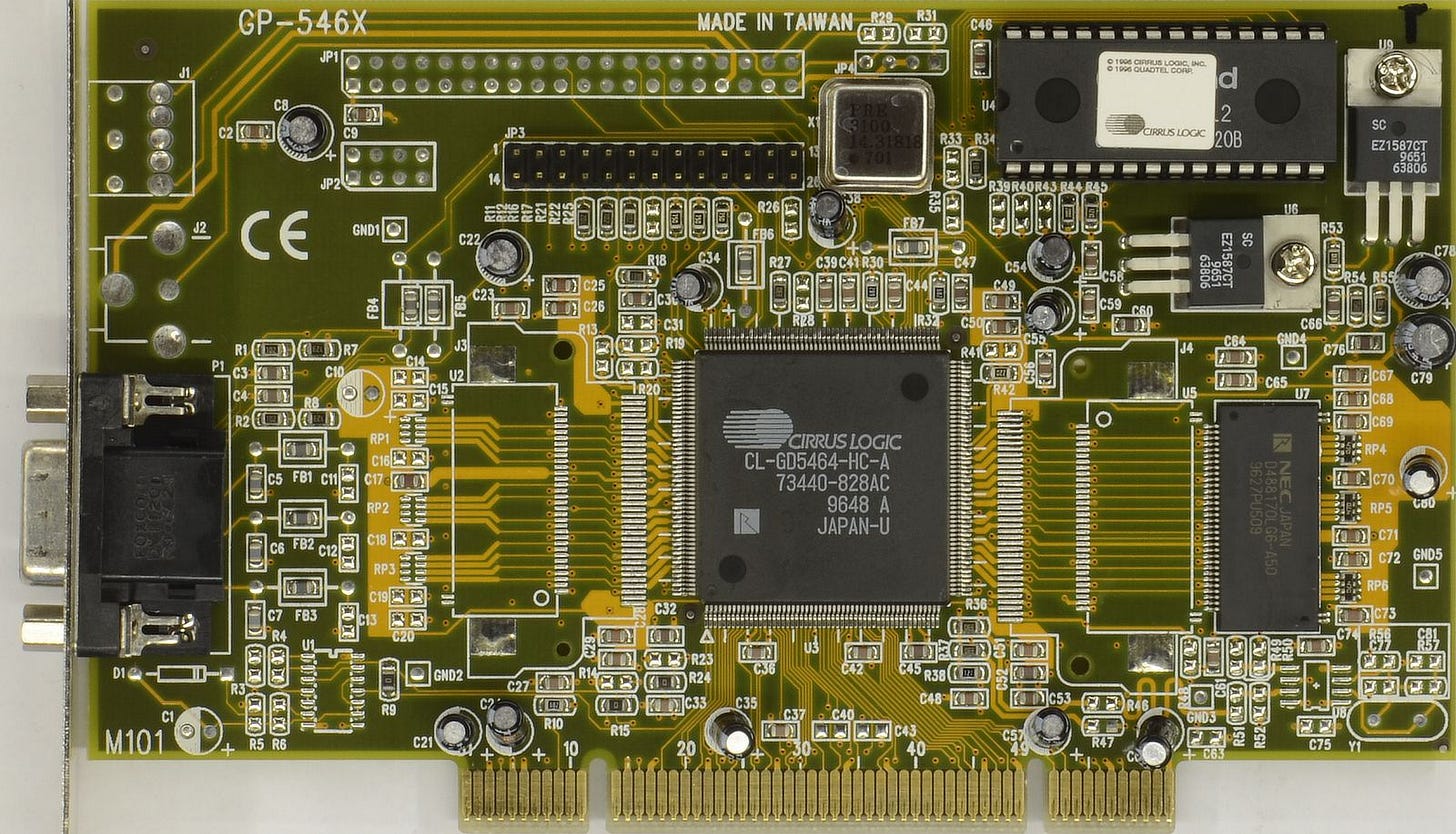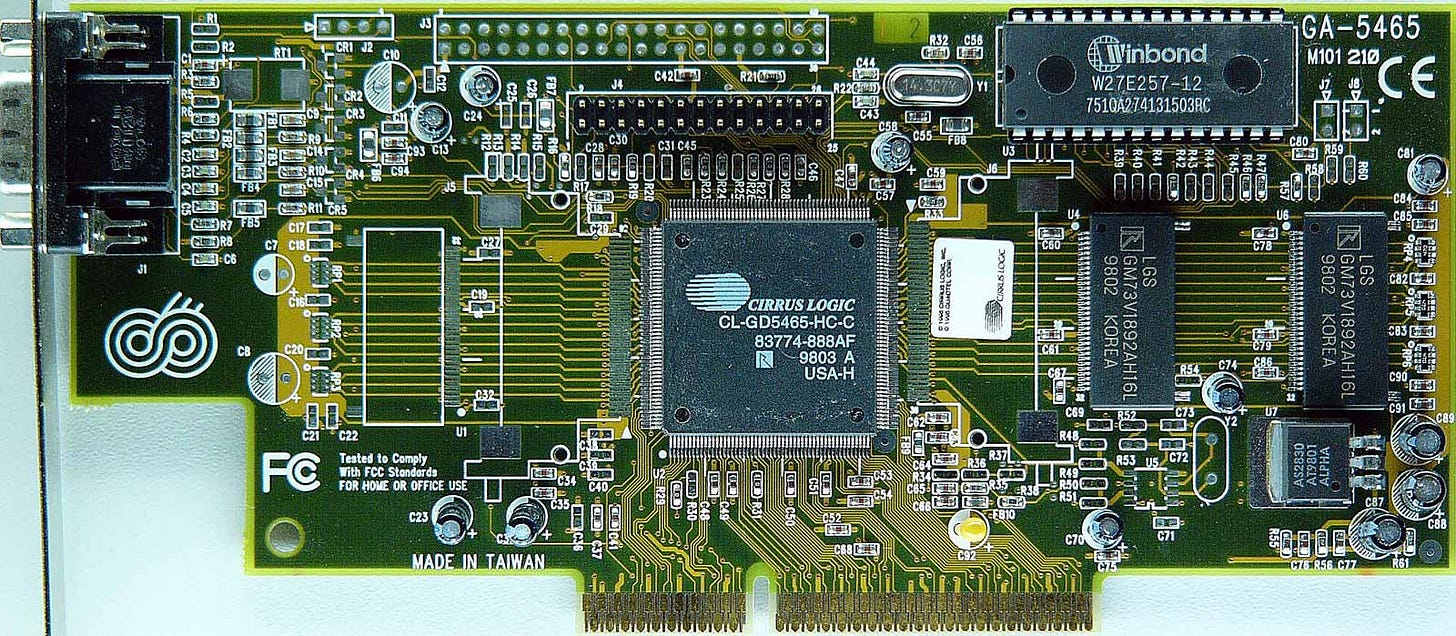Cirrus Logic
The Rise and Rise of Peripheral ICs
Suhas Shrikrishna Patil was born in Jamshedpur, Jharkhand, India in 1944. Patil descends from a line of farmers, but his father was the first from his town to attend a university and earn a degree in engineering. This was very much a part of the city’s progression at the time. Just 50 years earlier, the area was nothing but jungle, and by 1944, it was home to the largest steel company in the country, Tata. Patil’s father worked for Tata in various capacities as an electrical engineer, mechanical engineer, and a trainer of metallurgists. After a time, it was discovered that he was the best person on staff to serve as a cost accountant, so he did that. To help his family get ahead, Patil’s father had a small radio repair shop, and this was quite useful for the younger Patil. Having electronic components and amateur radio manuals available to him, he learned debugging, repair, and basic circuit design. Before he’d completed his grade school education, he’d built a receiver and a transmitter. Patil’s father also had a subscription to Popular Science magazine. The magazine was in English, and so the young Suhas Patil endeavored to learn English to be able to read the magazine.
Patil wanted to be a scientist as a child, and he enrolled at St. Xavier’s in Calcutta for with that goal. After two years, he’d discovered that being a scientist wasn’t for him. He left Xavier’s and enrolled at the Indian Institute of Technology for electronics and communications. The entire department had about twelve students, but the professors were passionate, and they encouraged their students to be their best. In his final year at the school, Don Blitzer was serving as a visiting professor from the University of Illinois. He brought transistors with him, and he taught the students about the function and use of them. For Patil, Blitzer and the transistor made a huge impact. In late 1964, he made a three decimal-digit counter. Patil’s only regret about that project was that he didn’t yet have any entrepreneurial spirit.
At IIT Kharagpur, Patil’s interests shifted. The school had a donated IBM 1620 that had arrived in a series of boxes. The professors and students then had to assemble it, and Patil had to the opportunity to learn how to write loaders and assemblers. Shortly after, he learned to write programs in Fortran. This exposure to computers mixed with one other thing that Blitzer brought to Patil, the knowledge of American universities. IIT Kharagpur was intentionally modeled after MIT, and many of the textbooks used at the time had been written by American professors. Patil had done well in school, and while he wasn’t sure whether or not he could gain acceptance at MIT, had never left India, had never been on a airplane, and had little money (just $8), he was now certain that he wanted to study computer science and learn to build computers. He applied to the Massachusetts Institute of Technology’s graduate program, and he was accepted.
Up to this point, the majority of Patil’s knowledge of the USA had come from comic books. He had expected that he’d meet Native Americans, but to his surprise and disappointment, he did not. He’d not been prepared for the number of automobiles he’d see, and he felt that the streets of Boston were something of a showcase. But of everything he saw in his first days in the city, what had most impressed him was the physical infrastructure. An engineer, he most certainly was.
Arriving at MIT, Patil became a teaching assistant. With the arrival of summer, he found himself without a job, but fortunately for him, he had experience in software. His aptitude in this area led the school to have him build a piece of accounting software that tracked which classes, teachers, and students were engaged with what assignments, and how much time and money was being allocated to professors, assistants, courses, and departments. He had around 32 tracks of memory on the hard drive, a teletype, and an on-line system. He wrote the application in modules, tested each module, and in the last two days of the summer, put all of the modules together. The program worked. This allowed the school to quickly and easily answer questions such as: How much money does our computer education offering cost us, and how much does it make us?
Project MAC (multi-access computer, or project on mathemtics and computation, or machine aided cognitions, or man and computer) was more of a laboratory than a single project by the time Patil came to the school, and Jack Dennis was leading the Computer Architecture group within the project. Patil met with Dennis in the hopes of gaining a position within the group, and Dennis said “Here are a bunch of papers. Read them and if you still like this field come back, here's a desk for you, and then I will support you next year as a research assistant.” Of course, Patil came back and joined the team.
The goal for Patil was to build a system where the design and the computer were equivalent, or correct-by-construction. In the 1960s, this wasn’t usually the case. A computer would be designed, then built, then not operate properly, and countless hours of debugging with an oscilloscope, doing traces, and manually confirming whether or not each component worked would ensue. Patil figured that much of this could be solved using a clockless (self-timed) computer built of modules. Patil’s thesis then went on to prove this could work with physics, mathematics, and engineering that I cannot fully comprehend. In what I am sure was frustrating for him, more people were interested in his software accounting system than in his thesis after he gained his Ph.D. in 1970.
Up to the point that he completed his education, Patil wasn’t quite sure what he’d do after. His office-mate, Larry Seligman, asked him: “Suhas, what are you doing here? We're starting a company where we're going to build computers. Do you want to build computers? That's what you do. Why don't you quit and come join us?” To which, Patil replied: “Look, I came here to finish my studies. I mean this sounds very attractive but I've got to finish my Ph.D.” Seligman joined up with Edson de Castro, Henry Burkhardt, Richard Sogge, and Herbert Richman, and they started Data General. Patil had thought that he’d spend some time at MIT, maybe work in the industry a bit, and then most likely move back to India and build some computers. Instead, upon gaining his Doctor of Science, interviewing with companies in the USA and India, he was offered positions on the faculty of MIT and Carnegie Melon. He chose to remain at MIT. Patil relates that this decision was important for him. While in India interviewing at various companies and schools, he realized that his spirit had changed. He’d become American in his thinking, his friendships, and his perspectives. In his words, by 1974, he’d realized that he belonged in the USA.
Throughout his education at MIT, and then while on faculty from 1970 through 1974, much of the research work Patil did on the Silicon Compiler was funded and encouraged by ARPA and the National Science Foundation, and ARPA kept many of the various schools in touch with each other. Patil was invited by some of the faculty at University of Utah to give a lecture, and he was subsequently invited to join the faculty there. This was attractive to him for two reasons. First, housing was far more affordable in Utah and he had a family. Second, Utah had a fab and VLSI program. Patil left MIT for the University of Utah. At the time, the airlines had a labor strike, so Patil packed up a U-Haul, drove across the country ahead of some snow storms, and arrived on Christmas Day in 1975 in Salt Lake City. Patil’s primary work at Utah was, once again, on Silicon Compiler technology but now with funding from General Instrument Corporation.
Patil Systems was founded in the research park of the University of Utah by Suhas Patil along with Dr. Ravindra, Jed Krohnfield, Reed Haslam, Harrold Carr, and Clement Leung with support from General Instrument in 1981. The goal of Patil Systems was to create standardized, application specific, integrated circuits as products; that is, video controllers, audio controllers, storage controllers, and so on. These would be created with the silicon compiler technology Patil had developed based upon storage/logic array technology (SLA). With this technology, one could design a chip with code without ever having studied electrical engineering. The code was essentially compiled to NMOS or CMOS (hence the name Silicon Compiler). Importantly, the company wouldn’t use a self-owned fab but outsource the production of their chips. General Instrument Corporation were keenly aware of the work that Patil had done, and they knew that his company would be able to design chips more quickly than any of their competitors, and that their chips would be inexpensive. For this, GI was willing to supply wafers to Patil Systems at a low and fixed price. The first chip the company designed was an SoC for a set top box that would not only allow the user to control which channel he/she was tuned into but also to download games. The design was completed in three months, and around 18,000 chips were delivered for the trial of the finished product. By the time these chips were handed off, the competitors trying for the contract were still working on their designs and hadn’t yet cut their rubyliths.
The Silicon Compiler consisted of three main parts. There was the Editor for high level design, which was a graphical editor in which the user typed his/her code, the output of which was then used in a symbolic design system (essentially a sort of preprocessor) that included a powerful and fast circuit simulator (written in LISP), and then finally, there was the compiler itself which took the SLA design and made a GDS file as output (a GDS file is a binary file format that represents planar geometric shapes, essentially a sort of CAD file). The special sauce at Cirrus was that the compiler had some tooling to slightly modify their designs for different fabs. This was important as not all fabs had capacity at all times. With that fab process differences accounted for in software, Patil Systems was able to take advantage of available capacity at any fab, at any time, and produce chips more quickly, more cheaply, and more easily than pretty much anyone else. Likewise, by using computer aided techniques, the company could achieve extremely high yields as they had near perfect conformance with design rules at each fab. All of this ran on Sun workstations (most likely Sun-1) starting in the summer of 1982. The new company reached $1 million in revenue in a single quarter in 1983. Patil Systems Inc was successful.
In 1983, the company was reorganized and secured funding. Patil System’s first VC, Fred Nazem of Nazem & Company, provided capital on the condition that the company kept its technologies secret. Nazem & Company didn't want Patil Systems providing any advantage to their competitors, and a former professor was likely to publish his work. Patil agreed to the terms. Shortly after this reorganization and funding, Patil and his colleagues realized that their customers were all in Silicon Valley. So, in 1984, the company moved to Fremont, California and renamed itself Cirrus Logic as cirrus clouds were the highest in the sky. In January of 1985, the company hired Micheal Hackworth (formerly at Fairchild, Motorola, Signetics) as President and CEO with Patil remaining as chairman and executive vice president of products and technology. For his part, Hackworth was originally hoping to make some deals with Patil Systems on behalf of Signetics, but then:
When I got in and met the people and understood what they had, it hit me like a ton of bricks that this could be the basis for a new kind of chip company.
With Hackworth’s business knowledge, the company became far more successful quite quickly. The first major change was to focus on peripheral devices in microcomputers. The first success was in hard disk controllers where the company developed a chip that could be mounted inside the drive rather than on a card outside of it. This won them business from Seagate and from Conner Peripherals.
In 1987, IBM launched their VGA controller which established itself as the new standard in PC graphics. Cirrus Logic was the first to market with a compatible that same year. This was the two-chip CL-GD410/GD420 chipset supporting the VGA, EGA, CGA (sort of), Hercules, and MDA standards with better performance than that of IBM while adding support for 800 by 600 and 752 by 410 both at 16 colors, with extra text modes including 80 by 60 and 132 by 43. These extra modes made this an early example of SVGA. This chipset was commonly paired with an inMOS RAMDAC as on the Video Seven VEGA VGA which sold for $259 in 1988.
The GD410/420 chipset was followed by the Eagle II chipset in 1988 which was again a two-chip design but with the GD510/GD520. These had much the same feature set but were 100% CGA compatible. Most cards shipping with the Eagle II chipset had both 9-pin and 15-pin D-SUB that allowed the use of both older CGA/MDA monitors and the newer VGA/SVGA/Multisync monitors. The Eagle II was followed by the single chip CL-GD5320 in July of 1990. Not only was this a single chip solution, but it also moved Cirrus Logic to 16bit ISA.
Cirrus Logic went public in 1989 and with the funds they raised, they went on a bit of a shopping spree. In 1990, the company acquired Data Systems Technology who made data compression and error-correction algorithms for modems. In 1991, Cirrus Logic bought the majority of Pixel Semiconductor who specialized in video imaging, and they purchased Crystal Semiconductor who made audio ICs. In 1992, they bought R. Scott Associates who made modem software, and they bought Acumos who specialized in desktop graphics. In 1993, the company bought Pacific Communications Sciences who specialized in cellular data communications. Shortly after that last purchase, the company announced that they’d be producing chips for Apple for use in the Newton. The difficulty in integrating all of these companies led to a reorganization aimed at decentralizing and streamlining operations.
In 1992, the company released the GD5424. This chipset was usually paired with either 512K or 1MB of FPM DRAM and was on either 16bit ISA cards or VL-BUS cards. This was followed the next year by the GD5426 which was slightly faster despite being at the same 80MHz core clock and supported 1MB or 2MB of memory.
In 1994, Cirrus Logic announced several join ventures. The first with ATML had them developing a single-chip asynchronous transfer mode network controller to reduce the cost of network switches. The second was with AT&T Microelectronics which was to produce 0.35 micron and 0.25 micron wafers with production starting in 1997. AT&T owned about 60% and Cirrus Logic owned 40%, and the two companies shared production capacity. The third was with IBM to expand MiCRUS with IBM retaining the option to purchase 50%. This was another wafer fab venture. A third fabrication joint venture was formed in 1995 with Lucent Technologies as Cirent Semiconductor.
From 1992 to 1996, Cirrus Logic experienced 569% revenue growth, but 1996 saw the company post a loss of $46.2 million on revenues of $917.2 million. This was largely due to slower product development and overcapacity in the fab ventures. The company subsequently laid off around 400 people. Apparently, their eyes were larger than their stomachs, or at least larger than their wallets.
With 3dfx, Nvidia, and ATI in the graphics market, Cirrus Logic’s offerings were starting to look dated. The company’s video controllers had always been the most popular in the low-cost market, and this was increasingly the case. The GD5440 of 1995 somewhat exemplified their market placement. While a PCI card, the GD5440 featured the same 1MB or 2MB of RAM as the 5424 but with a 32bit core running at 86MHz. The major difference over earlier models was the addition of hardware acceleration for MPEG-1 video, a feature offered, for example, by S3 a year earlier on the Vision864. This may seem small, but Cirrus was no longer leading.
The company’s first 3D accelerator was announced on the 24th of September in 1996. This was the GD5464 or Laguna3D manufactured exclusively (from what I can tell) by MiCRUS. All of these were PCI cards and they made use of RDRAM in sizes of 2MB, 4MB, or 8MB. The GD5464 was a 64bit chip running at 75MHz and with its support for RDRAM could achieve 528MB/s. It supported DirectX 3 and 5.
Announced the same day was the GD5465 which was much the same as the GD5464 but with options only for 4MB or 8MB of RDRAM and support for AGP. The 5465 also achieved slightly higher memory bandwidth at 600MB/s. The Creative Graphics Blaster MA334 was the first Laguna3D card to hit the market and that was in March of 1997.
Sadly, the Laguna3D chips should not have been the first 3D accelerators from Cirrus Logic. The company had acquired patents and engineers from Austek who’d developed the A1060 OpenGL accelerator, and they’d developed an API for 3D products with Argonaut. This resulted in the company producing the Mondello chipset in 1994, a 3D accelerator with a separate 2D chip and RAMDAC. This would most likely have been a VL-BUS card, but it never made it to market. I haven’t found a solid reason for why.
At any rate, Laguna wasn’t well-known. Given its price range of around $99, the card was an excellent product, and it out performed the Rage IIc, which cost around $269, in common gaming titles of the day. There were nearly zero reviews of Laguna by the press, and I suspect that this is what most damaged the Laguna’s sales. This is unfitting farewell as Laguna was the last PC graphics chipset from Cirrus Logic.
In 1998, the company saw more layoffs, ended their graphics, modems, and advanced systems product lines. Patil had ceased active engagement in the company in 1997 becoming the chairman emeritus, and Hackworth ceased his role as CEO (but remained chairman) in 1999. Into the leadership spotlight stepped David French (formerly COO). He quickly pulled the company out of their fab ventures, began a $127.7 million restructuring, and acquired AudioLogic to reinforce the audio division which represented roughly 55% of revenues (storage represented the bulk of the other 45%). Around this time, the company moved its headquarters to Austin, Texas. David French resigned in March of 2007, and Jason Rhode (VP and GM of Mixed-Signal Audio at Cirrus) became president and CEO. Over time, the company became almost entirely an audio IC company. Their expertise in this area put their chips in everything from cars to AirPods. After guiding this successful transformation, Rhode left the company in 2021, and John Forsyth, who’d served as chief strategy officer, was named CEO. The company’s net income for 2024 stood at $275 million, and they hold nearly 4000 patents.
My dear readers, many of you worked at, ran, or even founded the companies I cover here on ARF, and some of you were present at those companies for the time periods I cover. A few of you have been mentioned by name. All corrections to the record are sincerely welcome, and I would love any additional insights, corrections, or feedback. Please feel free to leave a comment.

